Motorsports
How F1’s top teams have evolved their brake solutions during 2024
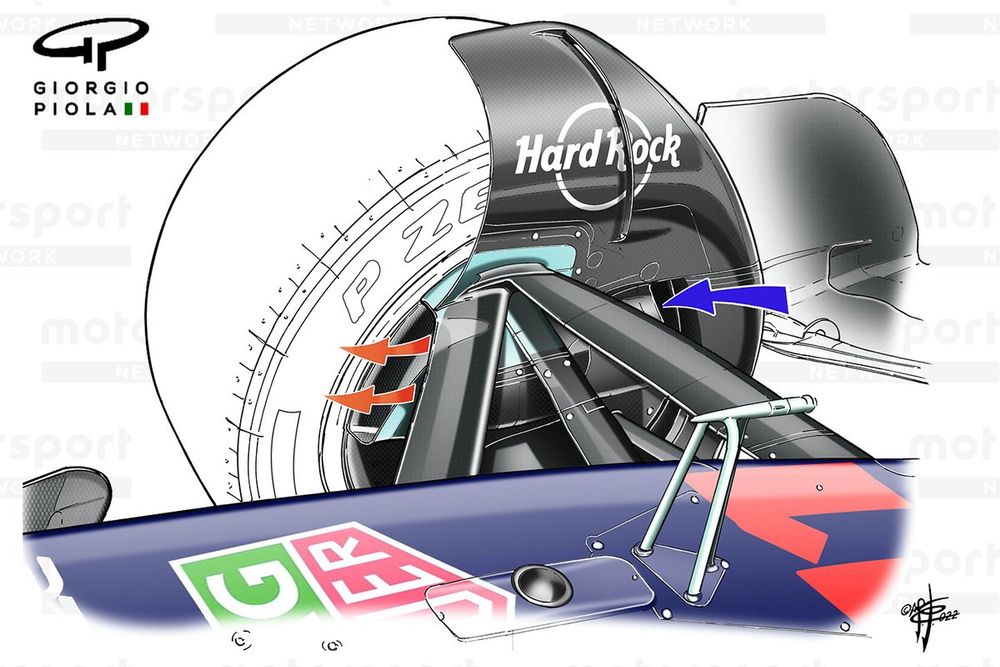
The changes made to Formula 1’s regulations were extensive for 2022. While much of the discussion since their introduction has revolved around the design of the sidepods and how teams have best managed the shift to more powerful floors, there’s been plenty of other design aspects that were affected.
These other design aspects have been steadily maturing over that time to improve the overall performance of each machine. One such design feature is the braking system, with several overlapping design disciplines required to extract maximum performance from them.
After all, it’s not only about providing optimal mechanical performance, the brake ducting also needs to provide enough cooling to support it, while also limiting the aerodynamic impact it has on surfaces.
Furthermore, the thermal interaction between the brakes and wheel rim has an impact on both the performance and degradation of the tyres, as the bulk temperature of the tyre can be affected by the transfer of heat between them.
As you’d expect, the general approach taken by the teams is the same, as they’re all constrained by the same regulations, but there’s more than enough scope left over for each team to have their own design DNA, with various solutions emerging even a few seasons on from the inception of these regulations.
And, to recap, the changes made for 2022 were primarily about controlling how heat and airflow escape the assembly, with teams using various design tactics in the previous regulatory era to improve the passage of flow around the wheel assembly.
This included items such as blown axles and crossover pipework within the brake duct assembly that served primarily as a means to improve its aerodynamic output, rather than being required as a means to cool the braking system.
Red Bull Racing RB18 extra brake cooling detail
Photo by: Giorgio Piola
To prohibit these aerodynamic solutions, the regulations no longer permit airflow to escape out of the brake duct’s outer face and out through the wheel rim. Instead, there’s a designated region on the brake duct’s end fence where the hot air is ejected (see the solution on the RB18, above).
This has led to teams creating multiple layers within their brake duct assembly in order that the airflow and heat can be better managed before being expelled from the system.
This nesting system usually consists of pipework that delivers cool air to the calliper and delivers it to the outlet after it has cooled the calliper, at least one internal drum, with various contours to baffle the airflow’s trajectory and a final external drum, which unlike in the past mustn’t have any holes or apertures with which to transfer airflow or heat to the external air stream.


Comparing the pipework delivering cool air to the calliper on the McLaren and Mercedes, for example, provides insight into the differing design conventions, with Mercedes selecting a more traditional short, single tract between the inlet and calliper, whilst McLaren has opted for an arrangement with two channels, feeding each side of the calliper independently.
And, while it has become common for teams to enclose the brake disc within its own fairing during this regulation set, to help better manage heat as it dissipates, some of the teams have now created windows within the fairing and the inner drum to allow passage for some of the heat being generated to find its way between the various stages of the nest.


As can be seen here, both Mercedes and Red Bull have designs with those features, albeit very different in their approach, as the former has opted for small elliptical apertures on the upper surface and outboard face of the inner drum.
Meanwhile, Red Bull has opted for a larger window, which is surrounded by a metal insert that will likely act as a heatsink too.
As you’d expect, there’s still plenty of performance to be found from changes here too, given it’s a performance intersection between numerous design fields. Teams are constantly updating the size of their inlet and outlet scoops to suit the given circuit’s characteristics, while also finding ways to better manage the airflow and heat internally to leverage the heat exchange from the brakes to the tyres, via the wheel rims.
Motorsports
Does van der Linde’s potential Lamborghini LMDh test hint at his future?
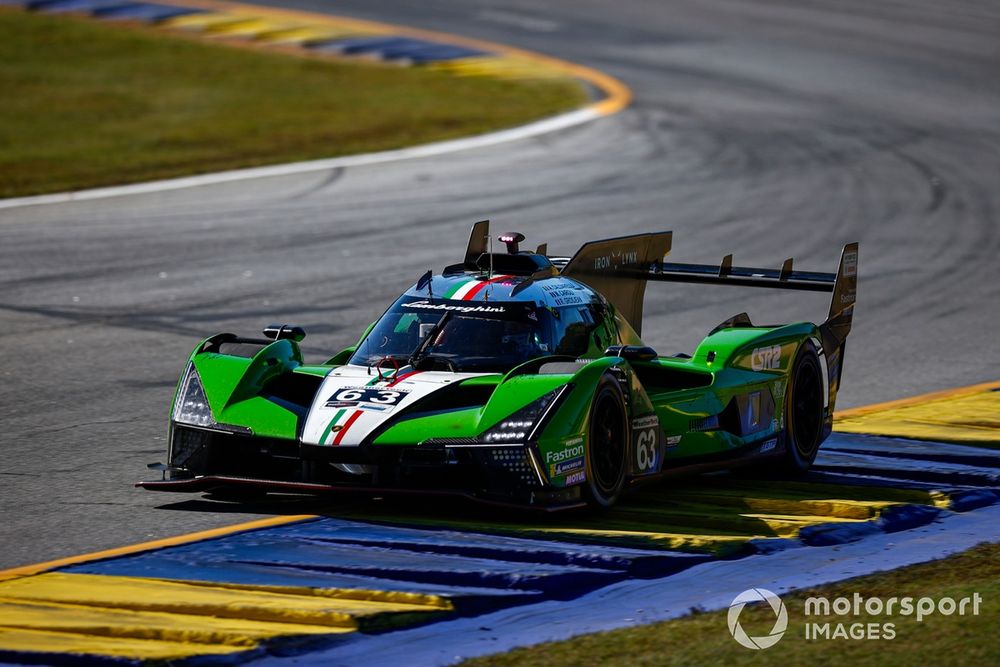
Kelvin van der Linde has insisted he wants to join a manufacturer that has a Hypercar and GT3 programme so he can continue in the DTM when his Abt contract is up, with a Lamborghini LMDh test a possibility.
The DTM championship contender’s future has been the subject of much speculation in 2024, with his two-year contract with Abt Sportsline expiring after this weekend’s final round at Hockenheim, where he will be battling Lamborghini driver Mirko Bortolotti for his maiden title.
Van der Linde has spent much of his professional career racing for Audi, but split with the German marque in 2023 following its decision to terminate its under-development Hypercar programme.
Since then he has become ‘brand neutral’, remaining with Abt Audi in the DTM while adding a new programme in the World Endurance Championship’s LMGT3 class with ASP Lexus.
However, he continues to harbour aspirations of racing in top-level prototype machinery, a goal he first set out when Audi announced plans to return to the WEC with an LMDh car. This would most certainly require him to land a factory deal with a manufacturer.
When asked about his future, van der Linde told Motorsport.com’s sister title Motorsport-Total.com: “Nothing has been signed, and there are currently a few offers.
“My wish was always to go to a manufacturer that has a Hypercar and a GT3 program because I want to continue to be active in the DTM.
“You can think about which manufacturers there are that have both programs: BMW, Cadillac, Lamborghini, and I don’t think any others.”
Abt is ending a long-term association with Audi to join forces with Lamborghini in 2025, which could open up new opportunities for van der Linde.
#63 Iron Lynx Lamborghini SC63: Matteo Cairoli, Andrea Caldarelli, Romain Grosjean
Photo by: Jake Galstad / Motorsport Images

Motorsport.com has learned that the 28-year-old may get an opportunity to sample the Lamborghini SC63 LMDh in next month’s Bahrain WEC rookie test, which would mark his first prototype appearance since a pair of outings in an LMP2 car in the 2021 Asian Le Mans Series.
It’s unlikely this will result in him joining the team in WEC next year, but it would at least mean that a Hypercar programme would be on the table for the future.
This would also allow him to remain in the DTM with Abt, the team he has been racing with since the series switched to GT3 rules in 2021.
Other than Lamborghini, it is understood that van der Linde has two more options. One of those is BMW, whose factory roster already includes his younger brother Sheldon.
Kelvin van der Linde shares a manager with three-time DTM champion Rene Rast, who was also a long-time factory Audi driver prior to his move to BMW in 2023.
When asked about the BMW rumor, Rast grinned and said: “Kelvin at BMW? No idea. We’ll have to talk to [our manager] Dennis [Rostek] about what he’s up to.”
However, Motorsport.com understands that the likelihood of van der Linde moving to BMW is low at the moment.
Similarly, while Cadillac will have an expanded two-car programme with Jota next year, the prospect of sister marque Corvette joining the DTM is implausible.
Toyota could also have been an option as van der Linde races for Lexus in the LMGT3 division, but the Japanese marque has no vacant spots on its Hypercar line-up for 2025.
That leaves Lamborghini as his best bet for a factory programme in 2025.
Motorsports
2024 F1 United States Grand Prix session timings and preview
Max Verstappen leads the drivers championship by 52 ponts as F1 returns from a month-long break, while McLaren has extended its advantage over Red Bull to 59 points in the manufacturers’ standings.
12:30
United States GP – FP1
United States GP – SPRINT QU
United States GP – SPRINT United States GP – QU
United States GP – Race
Event
Date
2024 Formula 1 United States Grand Prix session timings in different timezones
|
Session |
GMT |
BST |
CEST |
ET |
PT |
AEDT |
JST |
IST |
|---|---|---|---|---|---|---|---|---|
|
FP1 |
17:30 |
18:30 |
19:30 |
13:30 |
10:30 |
04:30¹ |
02:30¹ |
23:00 |
|
Sprint quali |
21:30 |
22:30 |
23:30 |
17:30 |
14:30 |
08:30¹ |
06:30¹ |
03:00¹ |
|
Sprint |
18:00 |
19:00 |
20:00 |
14:00 |
11:00 |
05:00¹ |
03:00¹ |
23:30 |
| Quali |
22:00 |
23:00 |
00:00¹ |
18:00 |
15:00 |
09:00¹ |
07:00¹ |
03:30¹ |
|
Race |
19:00 |
20:00 |
21:00 |
15:00 |
12:00 |
06:00¹ |
04:00¹ |
00:30¹ |
2024 Formula 1 United States GP session timings in the UK/Portugal
Friday 18th October 2024
- Free Practice 1: 18:30 – 19:30 BST
- Sprint qualifying: 22:30 – 23:14 BST
Saturday 19th October 2024
- Sprint: 19:00 BST
- Qualifying: 23:00 – 00:00 BST
Sunday 20th October 2024
2024 Formula 1 United States GP session timings in Europe
Friday 18th October 2024
- Free Practice 1: 19:30 – 20:30 CEST
- Sprint qualifying: 23:30 – 00:14 CEST
Saturday 19th October 2024
- Sprint: 20:00 – 21:00 CEST
Sunday 20th October 2024
- Qualifying: 00:00 – 01:00 CEST
- Race: 21:00 CEST
2024 Formula 1 United States GP session timings in the US (Eastern Time)
Friday 18th October 2024
- Free Practice 1: 13:30 – 14:30 ET
- Sprint qualifying: 17:30 – 18:14 ET
Saturday 19th October 2024
- Sprint: 14:00 ET
- Qualifying: 18:00 – 19:00 ET
Sunday 20th October 2024
2024 Formula 1 United States GP session timings in the US (Central Time)
Friday 18th October 2024
- Free Practice 1: 12:30 – 13:30 CT
- Sprint qualifying: 16:30 – 17:14 CT
Saturday 19th October 2024
- Sprint: 13:00 CT
- Qualifying: 17:00 – 18:00 CT
Sunday 20th October 2024
2024 Formula 1 United States GP session timings in the US (Pacific Time)
Friday 18th October 2024
- Free Practice 1: 10:30 – 11:30 PT
- Sprint qualifying: 14:30 – 15:14 PT
Saturday 19th October 2024
- Sprint: 11:00 PT
- Qualifying: 15:00 – 16:00 PT
Sunday 20th October 2024
2024 Formula 1 United States GP session timings in Australia
Saturday 19th October 2024
- Free Practice 1: 04:30 – 05:30 AEDT
- Sprint qualifying: 08:30 – 09:14 AEDT
Sunday 20th October 2024
- Sprint: 05:00 AEDT
- Qualifying: 09:00 – 10:00 AEDT
Monday 21st October 2024
2024 Formula 1 United States GP session timings in Japan
Saturday 19th October 2024
- Free Practice 1: 02:30 – 03:30 JST
- Sprint qualifying: 06:30 – 07:14 JST
Sunday 20th October 2024
- Sprint: 03:00 JST
- Qualifying: 07:00 – 08:00 JST
Monday 21st October 2024
2024 Formula 1 United States GP session timings in Africa
Friday 18th October 2024
- Free Practice 1: 19:30 – 20:30 SAT / 20:30 – 21:30 EAT
- Sprint qualifying: 23:30 – 00:14 SAT
Saturday 19th October 2024
- Sprint qualifying: 00:30 – 01:14 EAT
- Sprint: 20:00 SAT / 21:00 EAT
Sunday 20th October 2024
- Qualifying: 00:00 – 01:00 SAT / 01:00 – 02:00 EAT
- Race: 21:00 SAT / 22:00 EAT
2024 Formula 1 United States GP session timings in India
Friday 18th October 2024
- Free Practice 1: 23:00 – 00:00 IST
Saturday 19th October 2024
- Sprint qualifying: 03:00 – 03:44 IST
- Sprint: 23:30 IST
Sunday 20th October 2024
- Qualifying: 03:30 – 04:30 IST
Monday 21st October 2024
Can’t find your country or region in the list? Check the Formula 1 schedule page for the broadcast times in your local timezone.
Motorsports
Attack Charge technology “is working”, key Valencia test to determine fate
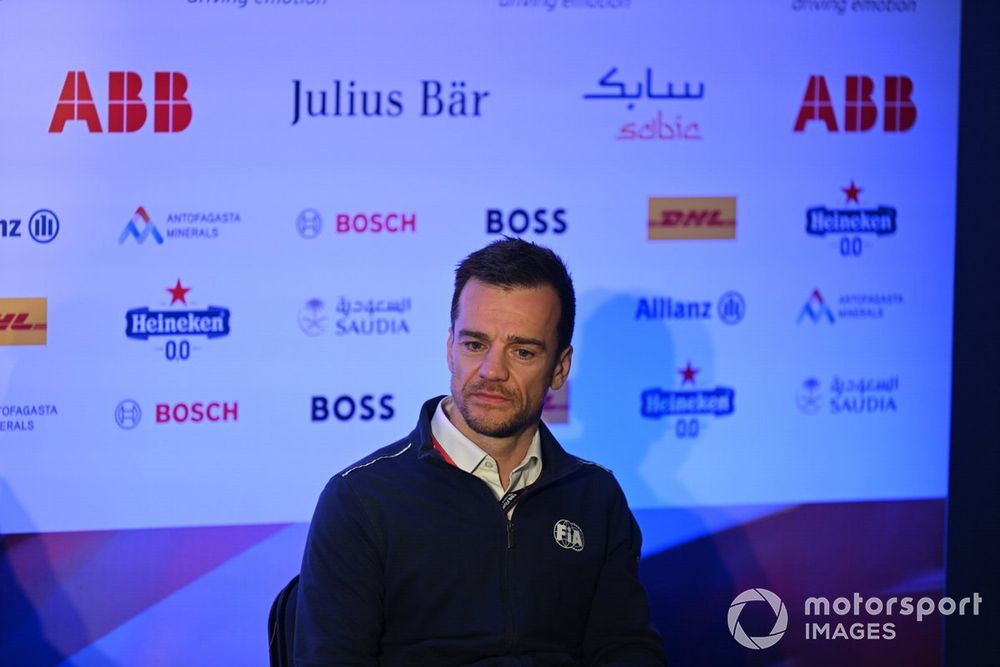
Formula E’s Attack Charge concept will finally be trialled in a mock race during pre-season testing next month, with the FIA claiming the “technology is working”.
One of the longest-running sagas of Formula E’s Gen3 era has surrounded fast-charging pitstops, which could appear later this season, having already been tested extensively during the off-season by teams.
The concept, where drivers would be required to pit during a race for approximately 30 seconds and receive a charge of power equal to 10% of the battery, was initially slated for the start of the Gen3 era in 2023.
This was pushed back by a year due to the introduction of the new machines, which put a strain on available parts and the general Formula E infrastructure, with testing of the technology taking place at various points last season in official practice sessions.
The fast-charging, which could eventually have a huge impact for electric vehicle consumers if successful, was never implemented in a race due to reliability concerns that have since been addressed ahead of the Gen3 Evo era.
“It came with big challenges; it’s not only pushing boundaries on the charger side but also on the battery side,” FIA Head of Championship for Formula E, Pablo Martino, told Motorsport.com.
“Through all the summer period this year, the manufacturers have had access to this technology, so they have been testing with that technology in place.
“They have performed quite a relevant amount of charging already. The technology is there, the technology is working.
“There are just a few operational corrections that need to be addressed, but nothing related to the technicality.
“On how the system is operated, that part is something that is currently in the last phase of sign-off, let’s say, in terms of technology.”
Pablo Martino, FIA
Photo by: Simon Galloway / Motorsport Images

Teams have been able to use the charge boosters during testing to work on the procedure from an operational perspective, with further running now set to take place at pre-season testing in Valencia.
The four-day test, which gets under way on 4 November, will include a mock race with the fast-charging pitstops set to feature, giving teams and the FIA the chance to see the technology used in a dynamic race situation.
Teams simulated pitstops during the same mock race in pre-season last year, but the technology was not used due to unreliability and safety concerns at the time.
“From an operational point of view, we’re pretty close,” adds McLaren chief engineer Albert Lau.
“But we just haven’t had, I guess, the volume of boost charges that would for me sign it off to the point where we’re happy that it’s all OK.
“You’re talking about a boost charge per race, per car, and you add that up; you need hundreds of boost charges signed off before you’re going to go into a season.
“You don’t go to Le Mans and do a 24-hour test. You’ve done a 36-hour test beforehand and it’s the same thing for this.”
However, even if the technology proves reliable and teams are up to speed with it operationally, there’s no guarantee that it will be implemented for the upcoming season.
Martino admits that further simulation and research will need to take place to ensure that adding the procedure into a race won’t diminish the spectacle or create any additional issues.
“There is also an exercise that needs to be understood, which is how this attack charge affects the race,” he said.
“This is something that needs to be captured, so even if the technology is there, we need to understand what’s going to happen in races. That will also be taken into account for a final decision.”
Motorsports
“Aggressive” Marquez now has more respect for rivals on track
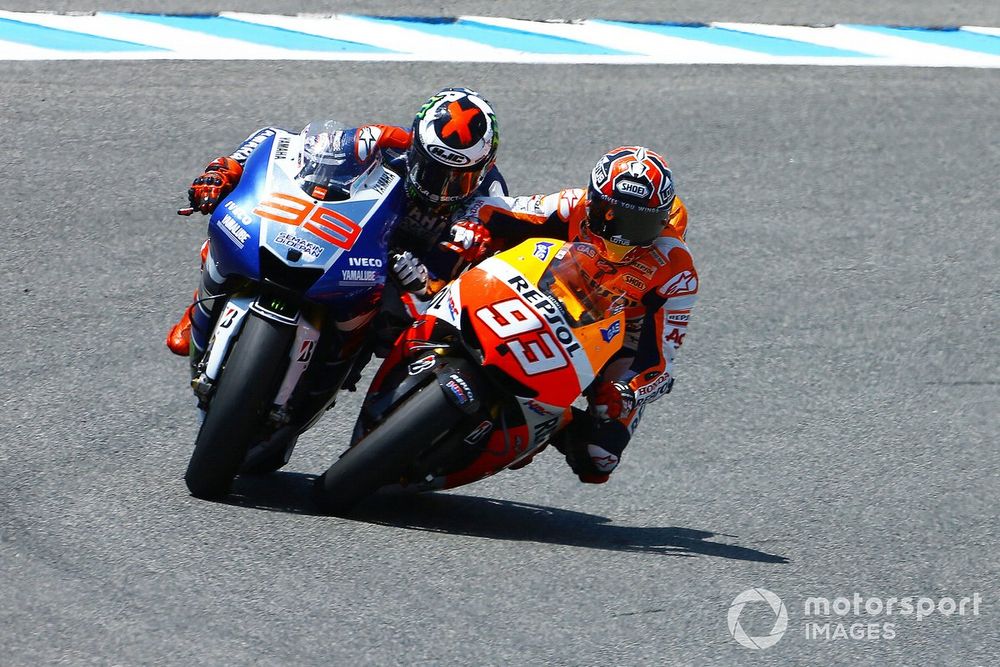
Former MotoGP star Jorge Lorenzo believes Marc Marquez now displays more respect towards rivals while battling with them on track, having initially found his antics to be “very aggressive”.
Lorenzo was one of Marquez’s main rivals during his golden period in the 2010s, with the pair even becoming team-mates at Honda in the former’s final season in 2019.
Their careers have taken different turns since then, with Lorenzo going on to become a commentator for Spanish broadcaster DAZN and Marquez joining the Gresini Ducati team in 2024 after being saddled with injuries and an uncompetitive bike in his final years at Honda.
Lorenzo admitted that he wasn’t a fan of Marquez’s style of racing when the latter graduated to the premier class in 2013 as the reigning Moto2 champion, but feels his countryman has changed the way he rides against other riders over the years.
“In 2013, I didn’t accept his [Marc’s] way of racing, which was very aggressive,” the three-time champion said at Festival dello Sport in Italy. “Now he has a bit more ‘respect’ towards his rivals. It must be said that the rules are stricter than ten years ago.”
Marc Marquez, Repsol Hond and Jorge Lorenzo, Yamaha
Photo by: Gold and Goose / Motorsport Images

Marquez won six titles in his first seven years in MotoGP, with Lorenzo – then at Yamaha – the only rider to break his run when he triumphed in the controversial 2015 season.
Things started going downhill for Marquez after Lorenzo retired from MotoGP, with a horrific crash at the 2020 season opener in Jerez leaving him with career-altering injuries.
It took multiple surgeries and prolonged layoff periods to put the accident behind, but by the time he was close to full fitness the Honda RC213V had slumped to become the slowest bike on the grid.
Lorenzo believes Marquez would have been able to win several additional titles had his arm not been broken at Jerez four years ago.
“He is a beast on a sporting level,” he said of the 31-year-old. “Since 2020, he has had very bad luck in terms of his physical condition. Without those problems, he would have won at least two or three more world championships.”
Marquez’s struggles at Honda prompted him to leave the Japanese manufacturer with a year left on his contract and join Gresini at the start of the 2024 season.

Marc Marquez, Gresini Racing
Photo by: Gold and Goose / Motorsport Images
He will move up to the factory Ducati team next year, partnering Francesco Bagnaia, and will be in a position to challenge for the championship for the first time since 2019.
Lorenzo himself spent two seasons with Ducati in 2017-18 as part of a multi-million deal with the aim of leading the Borgo Panigale marque to its first title since 2007.
Although the Spaniard did hit his stride in his second season after a slow adaptation, the partnership ultimately ended with just three wins to boot.
He ended up moving to Honda for what turned out to be his final year in the premier class, while Ducati slowly turned the Desmosedici into a dominant bike.
Hailing Ducati’s general manager Gigi Dall’Igna, Lorenzo said he would have been able to achieve the target set out by Ducati had he stayed with the team for a few more seasons.
“We met in 2004, in my last year in 125cc. Fate brought us together at Ducati,” he said of Dall’Igna. “I was very sorry not to have won a title with the Italian brand. I am convinced that, if I had stayed two more years, we would have won it.
“Now it is the best bike. It has no weak points.”
Motorsports
The Crazy Science Behind the Reliability of an F1 Car | Safe and Secure x CrowdStrike
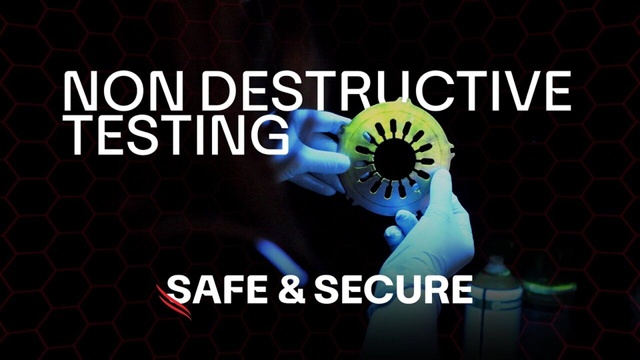
Continue reading with advertising …
… or with a subscription
Visit motorsport.com as usual with advertising and tracking. You can revoke your consent at any time via the data protection page.1
Use motorsport.com without any advertising banners, personalized tracking and commercials for a small fee.
More information about advertising and tracking in our Data protection notice, the List of our partners and in Data protection information center.
Already a subscriber?
Log in here
Motorsports
The First Ever F1 Crash Helmet!? | Safe and Secure x CrowdStrike

Continue reading with advertising …
… or with a subscription
Visit motorsport.com as usual with advertising and tracking. You can revoke your consent at any time via the data protection page.1
Use motorsport.com without any advertising banners, personalized tracking and commercials for a small fee.
More information about advertising and tracking in our Data protection notice, the List of our partners and in Data protection information center.
Already a subscriber?
Log in here
-

 Science & Environment4 weeks ago
Science & Environment4 weeks agoHyperelastic gel is one of the stretchiest materials known to science
-

 Technology4 weeks ago
Technology4 weeks agoWould-be reality TV contestants ‘not looking real’
-

 Science & Environment4 weeks ago
Science & Environment4 weeks agoHow to unsnarl a tangle of threads, according to physics
-

 Science & Environment4 weeks ago
Science & Environment4 weeks agoMaxwell’s demon charges quantum batteries inside of a quantum computer
-

 Science & Environment4 weeks ago
Science & Environment4 weeks ago‘Running of the bulls’ festival crowds move like charged particles
-

 Technology3 weeks ago
Technology3 weeks agoIs sharing your smartphone PIN part of a healthy relationship?
-

 Science & Environment4 weeks ago
Science & Environment4 weeks agoLiquid crystals could improve quantum communication devices
-

 Science & Environment4 weeks ago
Science & Environment4 weeks agoQuantum ‘supersolid’ matter stirred using magnets
-

 Womens Workouts3 weeks ago
Womens Workouts3 weeks ago3 Day Full Body Women’s Dumbbell Only Workout
-

 Science & Environment3 weeks ago
Science & Environment3 weeks agoX-rays reveal half-billion-year-old insect ancestor
-

 Science & Environment4 weeks ago
Science & Environment4 weeks agoWhy this is a golden age for life to thrive across the universe
-

 Science & Environment4 weeks ago
Science & Environment4 weeks agoSunlight-trapping device can generate temperatures over 1000°C
-

 Science & Environment4 weeks ago
Science & Environment4 weeks agoQuantum forces used to automatically assemble tiny device
-

 Science & Environment4 weeks ago
Science & Environment4 weeks agoNerve fibres in the brain could generate quantum entanglement
-

 Science & Environment4 weeks ago
Science & Environment4 weeks agoITER: Is the world’s biggest fusion experiment dead after new delay to 2035?
-

 Science & Environment4 weeks ago
Science & Environment4 weeks agoHow to wrap your mind around the real multiverse
-
News1 month ago
the pick of new debut fiction
-

 Science & Environment4 weeks ago
Science & Environment4 weeks agoA slight curve helps rocks make the biggest splash
-

 News3 weeks ago
News3 weeks agoOur millionaire neighbour blocks us from using public footpath & screams at us in street.. it’s like living in a WARZONE – WordupNews
-

 Science & Environment4 weeks ago
Science & Environment4 weeks agoLaser helps turn an electron into a coil of mass and charge
-

 Science & Environment4 weeks ago
Science & Environment4 weeks agoTime travel sci-fi novel is a rip-roaringly good thought experiment
-

 Science & Environment4 weeks ago
Science & Environment4 weeks agoNuclear fusion experiment overcomes two key operating hurdles
-

 Science & Environment4 weeks ago
Science & Environment4 weeks agoPhysicists are grappling with their own reproducibility crisis
-

 News1 month ago
News1 month ago▶️ Hamas in the West Bank: Rising Support and Deadly Attacks You Might Not Know About
-

 News4 weeks ago
News4 weeks ago▶️ Media Bias: How They Spin Attack on Hezbollah and Ignore the Reality
-

 News4 weeks ago
News4 weeks agoYou’re a Hypocrite, And So Am I
-
Business3 weeks ago
Eurosceptic Andrej Babiš eyes return to power in Czech Republic
-

 Sport4 weeks ago
Sport4 weeks agoJoshua vs Dubois: Chris Eubank Jr says ‘AJ’ could beat Tyson Fury and any other heavyweight in the world
-

 Science & Environment4 weeks ago
Science & Environment4 weeks agoA new kind of experiment at the Large Hadron Collider could unravel quantum reality
-

 Science & Environment4 weeks ago
Science & Environment4 weeks agoCaroline Ellison aims to duck prison sentence for role in FTX collapse
-

 News1 month ago
News1 month agoNew investigation ordered into ‘doorstep murder’ of Alistair Wilson
-

 Science & Environment4 weeks ago
Science & Environment4 weeks agoRethinking space and time could let us do away with dark matter
-

 Technology3 weeks ago
Technology3 weeks agoWhy Machines Learn: A clever primer makes sense of what makes AI possible
-

 Technology3 weeks ago
Technology3 weeks agoQuantum computers may work better when they ignore causality
-

 Sport3 weeks ago
Sport3 weeks agoWatch UFC star deliver ‘one of the most brutal knockouts ever’ that left opponent laid spark out on the canvas
-

 Science & Environment4 weeks ago
Science & Environment4 weeks agoA tale of two mysteries: ghostly neutrinos and the proton decay puzzle
-

 Technology3 weeks ago
Technology3 weeks agoRobo-tuna reveals how foldable fins help the speedy fish manoeuvre
-
Business3 weeks ago
Should London’s tax exiles head for Spain, Italy . . . or Wales?
-

 MMA3 weeks ago
MMA3 weeks agoConor McGregor challenges ‘woeful’ Belal Muhammad, tells Ilia Topuria it’s ‘on sight’
-

 Football3 weeks ago
Football3 weeks agoFootball Focus: Martin Keown on Liverpool’s Alisson Becker
-

 Health & fitness4 weeks ago
Health & fitness4 weeks agoThe secret to a six pack – and how to keep your washboard abs in 2022
-
News4 weeks ago
The Project Censored Newsletter – May 2024
-

 Technology3 weeks ago
Technology3 weeks ago‘From a toaster to a server’: UK startup promises 5x ‘speed up without changing a line of code’ as it plans to take on Nvidia, AMD in the generative AI battlefield
-

 Technology2 weeks ago
Technology2 weeks agoMicrophone made of atom-thick graphene could be used in smartphones
-

 Business2 weeks ago
Business2 weeks agoWhen to tip and when not to tip
-

 Sport2 weeks ago
Sport2 weeks agoWales fall to second loss of WXV against Italy
-

 News4 weeks ago
News4 weeks agoIsrael strikes Lebanese targets as Hizbollah chief warns of ‘red lines’ crossed
-

 Science & Environment4 weeks ago
Science & Environment4 weeks agoFuture of fusion: How the UK’s JET reactor paved the way for ITER
-

 Technology2 weeks ago
Technology2 weeks agoUniversity examiners fail to spot ChatGPT answers in real-world test
-

 Science & Environment4 weeks ago
Science & Environment4 weeks agoPhysicists have worked out how to melt any material
-

 Technology4 weeks ago
Technology4 weeks agoThe ‘superfood’ taking over fields in northern India
-

 Science & Environment4 weeks ago
Science & Environment4 weeks agoUK spurns European invitation to join ITER nuclear fusion project
-

 CryptoCurrency4 weeks ago
CryptoCurrency4 weeks agoCardano founder to meet Argentina president Javier Milei
-

 TV3 weeks ago
TV3 weeks agoCNN TÜRK – 🔴 Canlı Yayın ᴴᴰ – Canlı TV izle
-

 News3 weeks ago
News3 weeks agoWhy Is Everyone Excited About These Smart Insoles?
-

 Technology3 weeks ago
Technology3 weeks agoGet ready for Meta Connect
-
Business2 weeks ago
Ukraine faces its darkest hour
-
Politics3 weeks ago
Robert Jenrick vows to cut aid to countries that do not take back refused asylum seekers | Robert Jenrick
-
Business2 weeks ago
DoJ accuses Donald Trump of ‘private criminal effort’ to overturn 2020 election
-

 Technology2 weeks ago
Technology2 weeks agoThis AI video generator can melt, crush, blow up, or turn anything into cake
-

 Entertainment1 week ago
Entertainment1 week agoChristopher Ciccone, artist and Madonna’s younger brother, dies at 63
-

 Sport4 weeks ago
Sport4 weeks agoUFC Edmonton fight card revealed, including Brandon Moreno vs. Amir Albazi headliner
-

 Science & Environment4 weeks ago
Science & Environment4 weeks agoBeing in two places at once could make a quantum battery charge faster
-

 News1 month ago
News1 month agoHow FedEx CEO Raj Subramaniam Is Adapting to a Post-Pandemic Economy
-

 Science & Environment4 weeks ago
Science & Environment4 weeks agoWhy we need to invoke philosophy to judge bizarre concepts in science
-
Business4 weeks ago
Thames Water seeks extension on debt terms to avoid renationalisation
-
Politics4 weeks ago
‘Appalling’ rows over Sue Gray must stop, senior ministers say | Sue Gray
-
Politics4 weeks ago
UK consumer confidence falls sharply amid fears of ‘painful’ budget | Economics
-

 Science & Environment3 weeks ago
Science & Environment3 weeks agoMeet the world's first female male model | 7.30
-

 Womens Workouts3 weeks ago
Womens Workouts3 weeks ago3 Day Full Body Toning Workout for Women
-

 Health & fitness3 weeks ago
Health & fitness3 weeks agoThe 7 lifestyle habits you can stop now for a slimmer face by next week
-

 Politics4 weeks ago
Politics4 weeks agoTrump says he will meet with Indian Prime Minister Narendra Modi next week
-

 CryptoCurrency4 weeks ago
CryptoCurrency4 weeks agoEthereum is a 'contrarian bet' into 2025, says Bitwise exec
-

 Health & fitness4 weeks ago
Health & fitness4 weeks agoThe maps that could hold the secret to curing cancer
-

 CryptoCurrency4 weeks ago
CryptoCurrency4 weeks agoDecentraland X account hacked, phishing scam targets MANA airdrop
-

 CryptoCurrency4 weeks ago
CryptoCurrency4 weeks agoBitcoin miners steamrolled after electricity thefts, exchange ‘closure’ scam: Asia Express
-

 CryptoCurrency4 weeks ago
CryptoCurrency4 weeks agoDZ Bank partners with Boerse Stuttgart for crypto trading
-

 CryptoCurrency4 weeks ago
CryptoCurrency4 weeks agoLow users, sex predators kill Korean metaverses, 3AC sues Terra: Asia Express
-

 CryptoCurrency4 weeks ago
CryptoCurrency4 weeks agoBlockdaemon mulls 2026 IPO: Report
-

 MMA4 weeks ago
MMA4 weeks agoRankings Show: Is Umar Nurmagomedov a lock to become UFC champion?
-

 Womens Workouts4 weeks ago
Womens Workouts4 weeks agoBest Exercises if You Want to Build a Great Physique
-

 Womens Workouts4 weeks ago
Womens Workouts4 weeks agoEverything a Beginner Needs to Know About Squatting
-

 News3 weeks ago
News3 weeks agoFour dead & 18 injured in horror mass shooting with victims ‘caught in crossfire’ as cops hunt multiple gunmen
-

 Servers computers3 weeks ago
Servers computers3 weeks agoWhat are the benefits of Blade servers compared to rack servers?
-

 Technology2 weeks ago
Technology2 weeks agoUkraine is using AI to manage the removal of Russian landmines
-
Business2 weeks ago
LVMH strikes sponsorship deal with Formula 1
-

 News2 weeks ago
News2 weeks agoHeartbreaking end to search as body of influencer, 27, found after yacht party shipwreck on ‘Devil’s Throat’ coastline
-

 MMA2 weeks ago
MMA2 weeks agoPereira vs. Rountree prediction: Champ chases legend status
-

 News4 weeks ago
News4 weeks agoChurch same-sex split affecting bishop appointments
-

 Technology4 weeks ago
Technology4 weeks agoiPhone 15 Pro Max Camera Review: Depth and Reach
-

 News4 weeks ago
News4 weeks agoBrian Tyree Henry on voicing young Megatron, his love for villain roles
-
Business4 weeks ago
JPMorgan in talks to take over Apple credit card from Goldman Sachs
-

 Science & Environment4 weeks ago
Science & Environment4 weeks agoQuantum time travel: The experiment to ‘send a particle into the past’
-

 Science & Environment4 weeks ago
Science & Environment4 weeks agoTiny magnet could help measure gravity on the quantum scale
-

 CryptoCurrency4 weeks ago
CryptoCurrency4 weeks agoDorsey’s ‘marketplace of algorithms’ could fix social media… so why hasn’t it?
-

 CryptoCurrency4 weeks ago
CryptoCurrency4 weeks agoBitcoin bulls target $64K BTC price hurdle as US stocks eye new record
-

 News4 weeks ago
News4 weeks agoBrian Tyree Henry on voicing young Megatron, his love for villain roles
-

 CryptoCurrency4 weeks ago
CryptoCurrency4 weeks agoCoinbase’s cbBTC surges to third-largest wrapped BTC token in just one week
-

 Science & Environment3 weeks ago
Science & Environment3 weeks agoCNN TÜRK – 🔴 Canlı Yayın ᴴᴰ – Canlı TV izle
-

 News3 weeks ago
News3 weeks agoShocking ‘kidnap’ sees man, 87, bundled into car, blindfolded & thrown onto dark road as two arrested

You must be logged in to post a comment Login